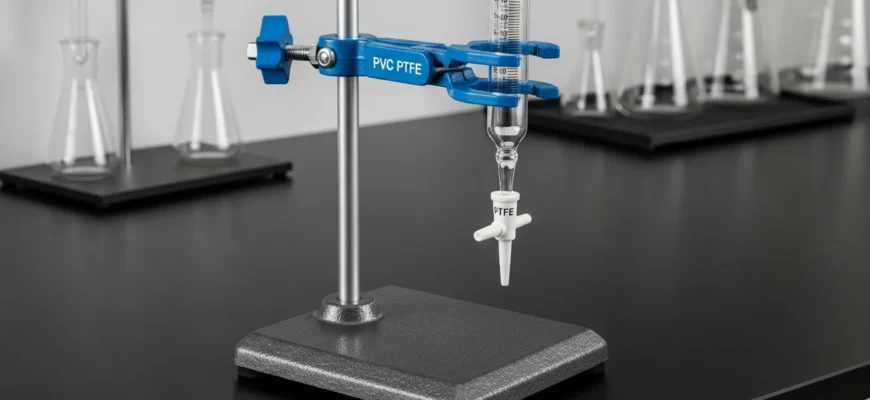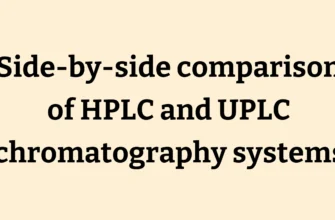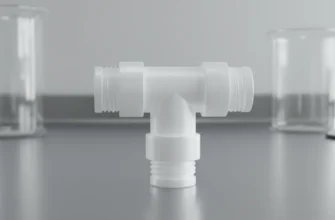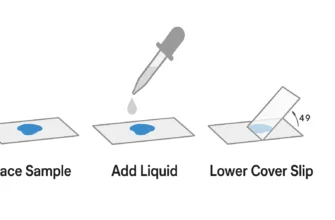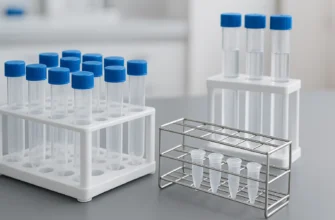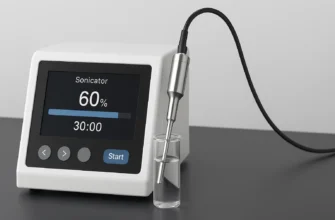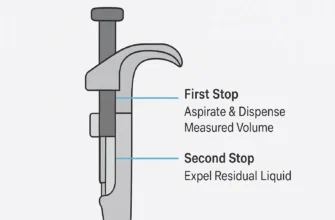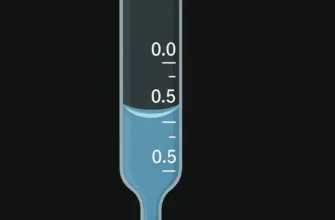Ultra-Precision Burette Stand with Adjustable Clamp: Professional Laboratory Support for Accurate Titration
Foundation Engineering: The Critical Role of Stability in Analytical Chemistry
In quantitative analysis and volumetric measurements, precision begins with unwavering stability. The slightest movement, vibration, or instability in your burette setup can compromise analytical accuracy, leading to parallax errors, inconsistent readings, and potential safety hazards. Professional laboratory work demands equipment that eliminates these variables, ensuring reproducible results and reliable data.
Modern analytical chemistry requires support stands that provide absolute stability for Class A and Class B burettes. Whether conducting acid-base titrations, redox analyses, or complexometric determinations, the foundation supporting your 50-mL burette with PTFE stopcock must remain perfectly motionless throughout the entire procedure.
Advanced Base Design: Cast Iron Construction with Chemical Resistance
Heavy-Duty Cast Iron Base Construction
Professional burette stands utilize cast iron bases typically measuring 150x100mm to 300x155mm, providing exceptional stability through optimal weight distribution. These bases weigh between 1.5-3.3kg, ensuring a low center of gravity that resists tipping and dampens vibrations from adjacent laboratory activities.
Base dimensions are engineered for maximum stability while maintaining efficient bench space utilization. The substantial mass of cast iron construction provides superior stability compared to lightweight alternatives, with powder-coated finishes offering enhanced chemical resistance.
Chemical-Resistant Surface Treatment
While chemical-resistant porcelain bases offer excellent resistance to chemical spills and corrosion, cast iron bases with specialized powder coatings are more commonly utilized in professional laboratories. These surfaces withstand exposure to acids, bases, and organic solvents while maintaining structural integrity and easy cleaning protocols.
Non-slip feet are integrated into the base design, preventing movement during titration procedures and ensuring consistent positioning throughout extended analytical sessions. This feature is essential when manipulating PTFE stopcocks and reading meniscus levels accurately.
Precision Clamp Engineering: Nickel-Plated Zinc with PVC Protection
Advanced Burette Clamp Construction
Professional burette clamps utilize nickel-plated zinc alloy construction for optimal durability and chemical resistance. The nickel plating provides corrosion protection while maintaining the structural strength required for secure burette mounting.
PVC-coated jaws with cork inserts ensure gentle yet firm gripping of delicate borosilicate glass burettes. This dual-protection system prevents scratching or damage to precision glassware while maintaining secure positioning throughout titration procedures.
Boss Head Integration and Height Adjustment
The Boss Head attachment system allows precise positioning along the aluminum rod or stainless steel support rod. Standard Boss Head clamps accommodate rods with diameters of 10-12mm, providing secure mounting with 360-degree rotational adjustment capability.
Single-handed operation is achieved through ergonomic knob design, allowing operators to adjust burette height while simultaneously managing titration procedures. This feature enhances workflow efficiency and reduces the risk of contamination from multiple hand contacts.
Rod Construction: Aluminum and Stainless Steel Engineering
Corrosion-Resistant Rod Materials
Professional lab stands employ aluminum rods or stainless steel construction (AISI 304) with diameters ranging from 8-12mm and heights from 450-750mm. Aluminum construction provides excellent corrosion resistance while maintaining structural rigidity required for stable burette mounting.
Stainless steel rods offer superior chemical resistance in aggressive laboratory environments, with powder-coated finishes providing additional protection against chemical exposure. Rod lengths are optimized for compatibility with standard fume hoods and glove box configurations.
Threaded Base Connection Systems
Support rods utilize threaded connections screwing into female threads in the cast iron base, ensuring secure attachment and easy disassembly for storage or transport. This design allows for complete stand disassembly while maintaining structural integrity during use.
Burette Compatibility: Class A and Class B Integration
Precision Glassware Support
Professional burette stands accommodate Class A and Class B burettes ranging from 10mL to 100mL capacity. Class A burettes offer superior accuracy with tolerances of ±0.05mL for 50mL units, while Class B burettes provide ±0.10mL tolerances for general laboratory applications.
50-mL burettes with 0.1mL graduations represent the most commonly used configuration, offering optimal resolution for standard analytical procedures. These units typically feature straight bore designs with PTFE stopcocks for precise flow control.
Borosilicate Glass 3.3 Compatibility
Borosilicate glass 3.3 construction ensures thermal shock resistance and chemical compatibility with aggressive reagents. This glass formulation meets ISO 385 and ASTM E287 standards for volumetric accuracy and durability.
PTFE stopcocks provide chemical resistance and precise flow control, with straight bore designs offering optimal drainage characteristics for accurate volume delivery. The combination of borosilicate glass and PTFE components ensures long-term reliability in demanding analytical applications.
Dedicated vs. Multi-Purpose Stand Performance
Specialized Burette Stand Advantages
Dedicated burette stands offer superior performance compared to general-purpose retort stands for precision analytical work. While retort stands (also called clamp stands or ring stands) provide versatility for multiple laboratory applications, dedicated burette stands optimize stability and precision for volumetric analysis.
Clamp & ring stands serve multiple functions but sacrifice the specialized stability required for high-precision titrations. The heavier bases and optimized geometry of dedicated burette stands provide measurably better vibration dampening and positional stability.
Multi-Purpose Laboratory Applications
Beyond titrations, professional burette stands support various analytical procedures including Test Tube Stand configurations, Rotary Pipette Stand applications, and general glassware support. The robust construction accommodates multiple burette clamps for comparative analyses or multi-component titrations.
Complete Stand Kit Configurations
Integrated System Components
Professional Stand Kit configurations include cast iron base, aluminum rod or stainless steel rod, and adjustable burette clamp with integrated Boss Head. Complete kits ensure component compatibility and eliminate sourcing challenges for laboratory managers.
Buret Stands are available in single and double clamp configurations, accommodating simultaneous multiple burette setups for comparative analyses. Double clamp systems utilize nickel-plated zinc construction with independent adjustment mechanisms for each burette position.
Accessory Integration Options
Wooden clamp stands offer traditional alternatives for educational laboratories, though cast iron bases provide superior stability for precision work. Professional laboratories typically specify metal construction for durability and chemical resistance.
Support stand accessories include additional clamps, rings, and specialized holders compatible with standard rod diameters. These modular components expand functionality while maintaining the stability characteristics essential for analytical work.
Material Standards and Compliance
International Quality Standards
Professional burette stands and compatible glassware meet ISO 385 standards for volumetric accuracy and construction quality. ASTM E287 specifications define tolerance requirements for Class A and Class B burette classifications.
Borosilicate glass components conform to Type I, Class A specifications under ASTM E-438, ensuring thermal and chemical resistance properties. Manufacturing includes batch certification and traceability for quality assurance.
Chemical Resistance Verification
PTFE stopcock components provide compatibility with acids, bases, and organic solvents commonly used in analytical procedures. Nickel-plated zinc clamp construction offers corrosion resistance while PVC coating protects glassware surfaces.
Cast iron bases with powder coating resist chemical spills and cleaning solvents, maintaining structural integrity and appearance throughout extended laboratory use.
Selection Criteria and Procurement Considerations
Laboratory-Specific Requirements Assessment
Frequent Buy List and Buy List systems streamline procurement for laboratories with recurring equipment needs. List price/quantity total calculations provide cost transparency for budget planning, with volume discounts available for institutional purchases.
Professional laboratories should evaluate base dimensions, rod specifications, and clamp compatibility when selecting burette stands. Weight specifications (1-3kg base weight) ensure adequate stability for precision analytical work.
Account-Based Pricing and Procurement
Logged in access to supplier systems provides list price transparency and account-specific pricing for institutional customers. Item 502655 and item 502665 represent specific model configurations with defined specifications and compatibility requirements.
Educational and commercial laboratories benefit from established vendor relationships providing technical support, replacement parts availability, and calibration services.
Installation and Operational Best Practices
Proper Setup Procedures
Professional burette stand installation requires level placement on stable laboratory benches with adequate clearance for burette manipulation. Non-slip feet should make complete contact with bench surfaces to prevent movement during use.
Boss Head clamps require proper tightening to prevent burette rotation while allowing necessary height adjustments. PVC-coated jaws should grip burettes firmly without over-tightening that could cause glassware stress or damage.
Maintenance and Longevity
Regular cleaning with appropriate laboratory solvents maintains chemical resistance and appearance of nickel-plated zinc components. Cast iron bases with powder coating require minimal maintenance beyond routine cleaning and inspection.
PTFE stopcock compatibility ensures long-term reliability with proper handling and storage procedures. Replacement clamps and accessories maintain operational capability throughout the equipment service life.
Investment in Analytical Precision
Professional burette stands represent essential infrastructure for accurate volumetric analysis, providing the stability foundation required for reproducible analytical results. The integration of cast iron bases, aluminum rods, nickel-plated zinc clamps, and Boss Head adjustment systems creates a precision platform optimized for demanding analytical work.
Investment in dedicated burette stands delivers measurable improvements in analytical precision compared to general-purpose retort stands or improvised support systems. The combination of engineering stability, material quality, and operational convenience ensures reliable performance throughout extended laboratory service.
For laboratories prioritizing analytical accuracy and operational efficiency, professional burette stands with integrated Stand Kit configurations provide comprehensive solutions supporting Class A and Class B burettes with PTFE stopcocks and borosilicate glass construction. This investment in precision infrastructure directly translates to improved analytical capability and research reliability.

